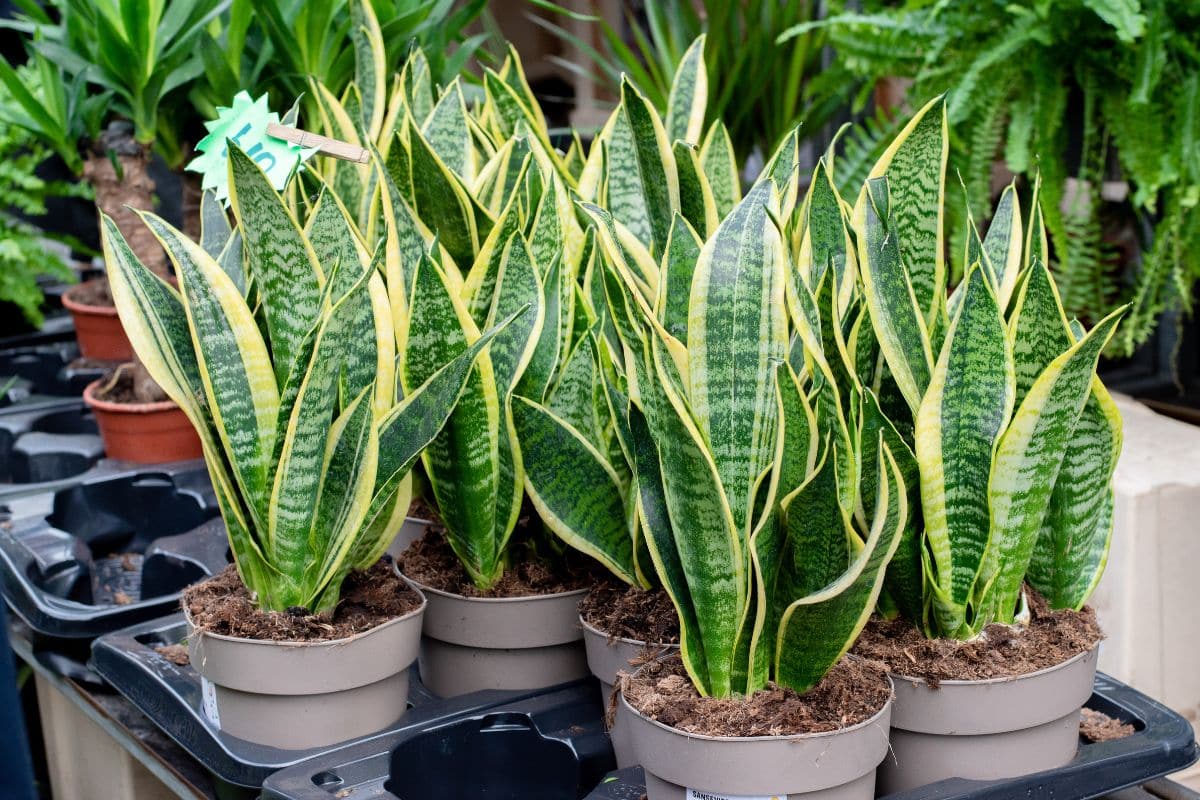The snake plant, scientifically known as Sansevieria trifasciata, has become increasingly popular in office environments. This resilient plant offers numerous benefits that make it an excellent choice for workspaces of all sizes. Beyond its striking appearance, the snake plant provides practical advantages that can enhance both the physical office environment and employee wellbeing.
Benefits of snake plants in office environments
Snake plants stand out as exceptional office companions due to their remarkable air-purifying capabilities. NASA’s Clean Air Study confirmed that these plants efficiently filter toxins like benzene, formaldehyde, trichloroethylene, xylene, and toluene from indoor air. Unlike many other air-purifying plants like the Swiss cheese plant, snake plants continue oxygen production at night, making them uniquely valuable for improving air quality around the clock.
Low maintenance requirements make snake plants ideal for busy office settings. These hardy succulents thrive with minimal attention, requiring infrequent watering and tolerating neglect better than most indoor plants. Their drought-resistant nature means they can survive even when office staff forget to water them during busy periods or holidays.
The aesthetic appeal of snake plants should not be underestimated in professional environments. Their architectural form with tall, sword-like leaves creates a modern, sophisticated look that complements various office design styles. Available in different varieties with varied leaf patterns and heights, these plants can be positioned as striking standalone specimens or arranged in groups for maximum visual impact.
Research has demonstrated that integrating plants like Sansevieria into workspaces can provide significant psychological benefits, including :
- Reduced stress levels among employees
- Improved concentration and productivity
- Enhanced creativity and problem-solving abilities
- Greater overall job satisfaction
- Decreased absenteeism rates
Snake plants are especially valuable in offices with limited natural light, as they adapt remarkably well to low-light conditions. While they prefer bright, indirect light, they can thrive in dimmer environments where many other plants would struggle or die, making them suitable for windowless rooms or cubicles positioned away from natural light sources.
Optimal placement of snake plants in offices
Strategic placement of snake plants can maximize their benefits throughout the workplace. Consider positioning these versatile plants near electronic equipment like computers, printers, and photocopiers, as they effectively absorb harmful emissions these devices release. This placement strategy creates cleaner air precisely where it’s most needed.
Meeting rooms benefit tremendously from snake plants, as these spaces often lack adequate ventilation, especially during lengthy discussions with multiple participants. The plants’ air-purifying capabilities can help maintain fresher air, potentially supporting clearer thinking and more productive conversations among team members.
Reception areas and entryways provide excellent locations for snake plants, where they create positive first impressions for visitors while helping filter pollutants that enter from outside. Their striking appearance contributes to a professional aesthetic that welcomes clients and partners while demonstrating your organization’s commitment to a healthy environment.
Individual workstations can be enhanced with smaller snake plant varieties, which provide personal air purification while adding a touch of nature to each employee’s space. This personalized approach to creating mini office gardens can boost morale and create a greater sense of ownership over one’s workspace.
Break rooms and communal areas where employees relax benefit from the calming presence of snake plants. Their natural elements help create restorative environments where staff can genuinely decompress during breaks, potentially returning to work more refreshed and focused.
Snake plant care tips for office settings
Successful snake plant maintenance in office environments begins with proper watering practices. These plants prefer to dry out completely between waterings, making them ideal for busy professionals. In typical office conditions, watering once every 2-4 weeks is usually sufficient, though this may vary based on temperature and humidity levels. When plant leaves show yellowing, it often indicates overwatering rather than underwatering.
Lighting considerations remain fairly flexible for snake plants, though understanding their preferences helps them thrive. While these resilient plants tolerate low light, they grow most vigorously in bright, indirect sunlight. Position them near windows when possible, but avoid harsh, direct sunlight which can scorch their leaves. Rotate plants occasionally to ensure even growth, as they naturally lean toward light sources.
Temperature and humidity tolerance makes snake plants particularly well-suited to office environments. They comfortably withstand the typical temperature range found in most workplaces (65-80°F/18-27°C) and don’t require the humidity adjustments that many other tropical plants demand. This adaptability to standard office conditions eliminates the need for special environmental controls.
Occasional cleaning of snake plant leaves enhances both their appearance and their air-purifying efficiency. Dust accumulation can block light absorption and reduce the plant’s ability to filter air effectively. Simply wiping leaves with a damp cloth monthly keeps them looking vibrant while maximizing their functional benefits.
When selecting containers for office snake plants, prioritize pots with drainage holes to prevent root rot. If decorative pots without drainage are preferred for aesthetic reasons, use them as cache pots with properly draining nursery pots inside. Choose containers that complement office décor while remaining functional for plant health.
Understanding potential growth patterns helps with long-term plant management. Snake plants grow relatively slowly, which is advantageous for office settings, but they will eventually require repotting every 2-3 years when roots become crowded. This infrequent maintenance requirement makes them even more suitable for busy workplace environments where gardening activities aren’t a priority.
For offices seeking to maximize sustainability practices, snake plants align perfectly with eco-friendly workplace initiatives, requiring minimal resources while providing significant environmental benefits. Their efficient metabolism makes them remarkably sustainable additions to any office seeking to reduce its ecological footprint while improving indoor conditions for employees.
Snake plants can be incorporated into diverse office settings, from traditional corporate environments to creative studios. Their distinctive appearance complements various interior design styles while offering functional benefits that extend far beyond mere decoration. Unlike more specialized plants like exotic varieties of radishes or other complex plants, snake plants remain straightforward to maintain while delivering impressive results.

